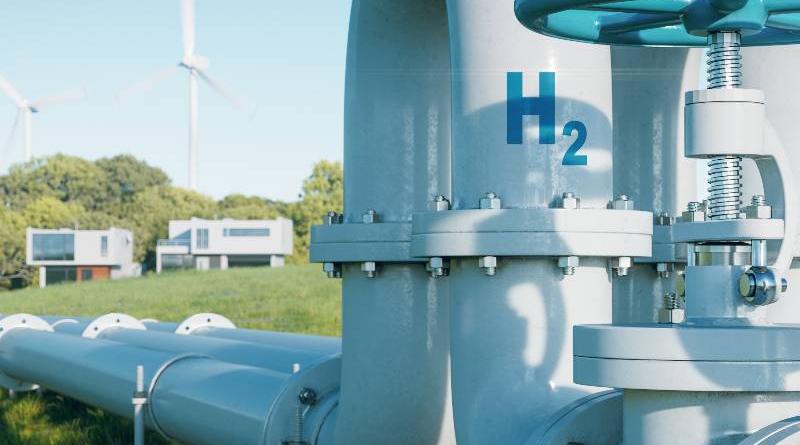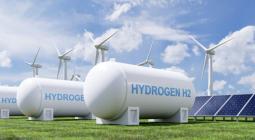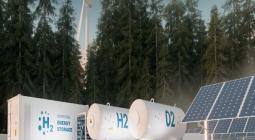IEA: Energy crises is boosting demand for low-emissions hydrogen

The global energy crisis is boosting interest in low-emissions hydrogen and the pipeline of projects is expanding, but only a small share of projects are under construction around the world.
Electrolyser manufacturing is set to grow strongly and pilot projects are popping up in new applications such as steel and transport. But, this is just a small part of the potential of the hydrogen landscape, highlighting the need for greater policy support, says a new IEA report.
The annual Global Hydrogen Review points out that encouraging developments in hydrogen technologies to support the clean energy transition include an expected six-fold increase by 2025 in global manufacturing capacity of electrolysers. This is very necessary to produce low-emission hydrogen from renewable electricity.
Low-emissions hydrogen production worldwide in 2021 was less than 1 million tonnes. Most of this came from plants using fossil fuels, with some from carbon capture, utilisation and storage.
At the same time, overall hydrogen demand worldwide reached 94 million tonnes worldwide, exceeding the 2019 high of 91 million tonnes. That increase was met by hydrogen produced from fossil fuels, not by carbon capture technologies. And, while that demand for new applications jumped by 60% in 2021, the growth to 40,000 tonnes was from a very low base.
Hydrogen and hydrogen-derived fuels could contribute to climate ambitions and energy security IF they are produced through clean energy. If they are deployed in sectors such as a heavy industry and long-distance transport they can cut emissions as they replace fossil fuels.
The IEA’s annual Global Hydrogen Review
The IEA’s annual publication tracks hydrogen production and demand worldwide, as well as progress in areas such as infrastructure development, trade, policy, regulation, investment and innovation.
The Global Hydrogen Review is an output of the Clean Energy Ministerial Hydrogen Initiative and is supposed to inform energy sector stakeholders on the status and future prospects of hydrogen.
This year’s Review is focused on helping decision makers fine-tune strategies to attract investment and facilitate deployment of hydrogen technologies while creating demand for hydrogen and hydrogen-based fuels.
It includes a special focus on how the global energy crises sparked by Russia invading Ukraine has accelerated the momentum behind hydrogen and the opportunities it offers to contribute decarbonisation targets and enhance energy security.
The Review lays out a series of policy recommendations to build the frameworks and create demand needed to encourage investment into low-emissions hydrogen projects. This includes the electrolysers and carbon capture technologies needed to produce low-emission hydrogen.
IEA Executive Director Dr Fatih Birol says there are growing signs that hydrogen will be an important element to help the world transition to an affordable, secure and clean energy system. “But, there are still major advances in technology, regulation and demand needed for it to fulfil its potential.
“The strong flow of announcements we now see for low-emissions hydrogen projects are yet another indicator that a new energy economy is emerging. Governments now need to implement concrete policies to remove regulatory barriers and support shovel-ready projects,” said Birol.
Only small share of hydrogen projects under production
The Review estimates that global hydrogen demand will reach 115 million tonnes by 2030. If governments fully deliver on their current climate pledges, that number could rise to 130 million tonnes and more than 25% of that could be met by low-emissions hydrogen. In this scenario, a similar amount of global hydrogen demand would be from new applications.
Some new applications for hydrogen are already showing progress. Announcements of new steel projects are growing fast, just one year after the first pilot plant using pure hydrogen in direct reduction of iron started production.
The first fleet of trains running on hydrogen fuel cells has started operating in Germany and there are already more than 100 pilot projects for using hydrogen and derivatives in shipping.
In the power sector, announced projects using hydrogen and ammonia stack up to almost 3.5GW of potential capacity by 2030.
Looking ahead
If all projects in the pipeline come to fruition, the production of low-emissions hydrogen could reach 16 to 24 million tonnes a year by 2030. More than half of that would come from electrolysers running on renewable energy. Completing all announced projects could result in the world’s capacity to produce hydrogen via electrolysers increasing to 290GW in 2030, compared to 0.5GW in 2021.
The Review suggests that based on today’s prices, hydrogen produced from renewable energy could already compete with hydrogen based on fossil fuels. This is true of regions which have a high potential for renewable energy production but currently use imported fossil fuels for hydrogen production.
Right now, global capacity to manufacture electrolysers sits at 8GW a year. But, based on industry announcements this could exceed 60GW a year by 2030. If all the electrolyser projects currently in the pipeline reach fruition, and the planned scaling up in manufacturing capacity takes place, costs could fall by around 70% by 2030, compared to today.
IEA policy recommendations to encourage low-emissions hydrogen
Move from announcements to actual policy implementations. Governments need to implement policies to reduce risk and improve the economic feasibility of low-emission hydrogen projects.
Raise ambitions for demand creation in key application. Policies to create demand for low-emission hydrogen are needed. This can be done through instruments such as auctions, mandates, quotas and requirements in public procurement. In new hydrogen applications, this policy action should be complemented by innovation and demonstration efforts. Focus on sectors where hydrogen can support decarbonisation and reduce dependency on fossil fuels, such as heavy industry, heavy duty road transport and shipping.
Identify opportunities for hydrogen infrastructure and ensure that short-term actions align with long-term plans. As governments address immediate energy needs, they must also consider how new gas-related infrastructure could support future hydrogen developments.
Intensify international cooperation for hydrogen trade. This can be through developing a standard for emissions intensity of hydrogen production and transport; defining robust and workable regulations; and cooperation on certification to ensure interoperability and avoid market fragmentation.
Remove regulatory barriers. Clear rules are useful but applying rigid regulatory principles in a nascent market discourages investment. Improving licencing and permitting can shorten project lead times. However, this needs to be done efficiently and coordinated so as not to compromise environmental standards and public consultation.
The Global Hydrogen Review 2022 is available online.
Image credit: malp@123rf.com
Have you read?
World’s first fossil-free steel delivered
Of reference
MENA could lead the way on global green steel production
Have you read?
Grant awarded for green hydrogen pilot project in Namibia





